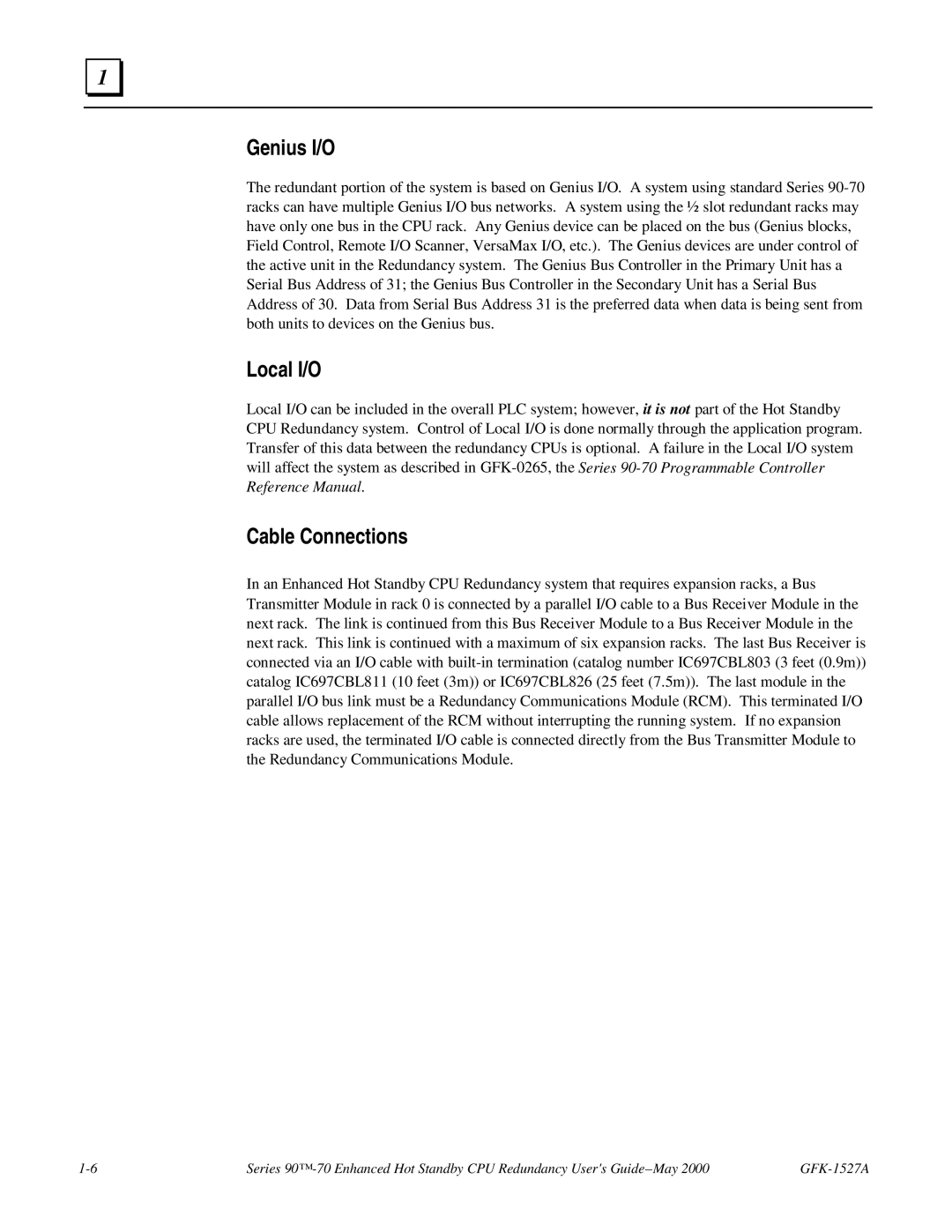1 |
Genius I/O
The redundant portion of the system is based on Genius I/O. A system using standard Series
Local I/O
Local I/O can be included in the overall PLC system; however, it is not part of the Hot Standby CPU Redundancy system. Control of Local I/O is done normally through the application program. Transfer of this data between the redundancy CPUs is optional. A failure in the Local I/O system will affect the system as described in
Cable Connections
In an Enhanced Hot Standby CPU Redundancy system that requires expansion racks, a Bus Transmitter Module in rack 0 is connected by a parallel I/O cable to a Bus Receiver Module in the next rack. The link is continued from this Bus Receiver Module to a Bus Receiver Module in the next rack. This link is continued with a maximum of six expansion racks. The last Bus Receiver is connected via an I/O cable with
Series |
